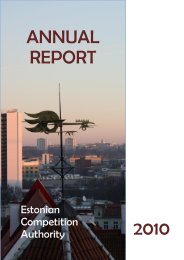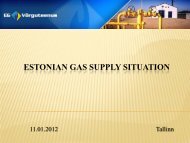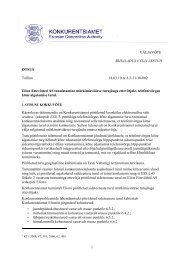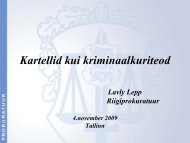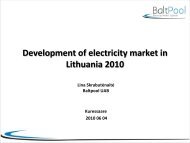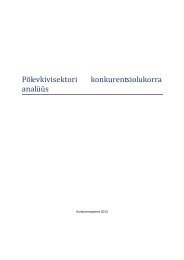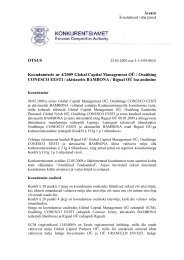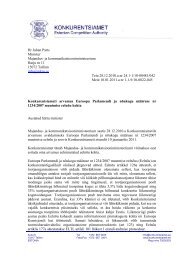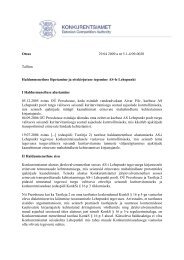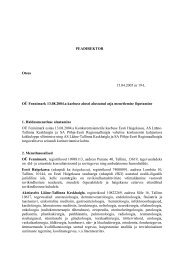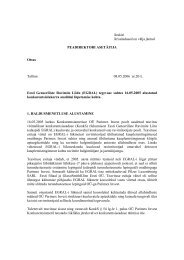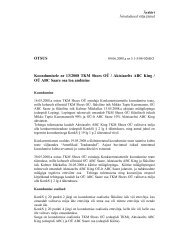annual report 2011 - Konkurentsiamet
annual report 2011 - Konkurentsiamet
annual report 2011 - Konkurentsiamet
Create successful ePaper yourself
Turn your PDF publications into a flip-book with our unique Google optimized e-Paper software.
of competition drastically. As far as satellite networks are concerned, price formation is similar,<br />
but these can cover the whole territory of Estonia as opposed to cable broadcasting and<br />
broadband networks. It turns out that while the services provided through Levira’s above-ground<br />
network are free of charge for consumers as far as free channels are concerned, a fee is charged<br />
for the services provided through the satellite network, and consumers must buy parabolic<br />
antennas to receive the signal. The free channels include, for example, ETV, ETV2, Kanal3 and<br />
TV3. The Competition Authority finds that the large price difference supports the positioning of<br />
these two services in different goods markets from the consumers’ point of view. Having<br />
switched from the above-ground broadcasting service to the satellite service, consumers do not<br />
replace one type of service with the other, but change their consumption habits by starting to<br />
consume a more expensive and considerably more extensive service.<br />
In the process of the assessment of Levira’s price formation, the Competition Authority<br />
proceeded from the determination of whether the ratio of the profitability and the economic<br />
merit of the service provided by Levira were reasonable. According to section 16 of the<br />
Competition Act, any direct or indirect abuse by an undertaking or several undertakings of the<br />
dominant position in the goods market is prohibited. Clause 1 of section 16 of the same act<br />
forbids an undertaking of the dominant position in the goods market to impose unfair purchase<br />
or selling prices or other unfair trading conditions directly or indirectly.<br />
It was found that Levira had earned profits higher than usual in the financial years 2007/2008<br />
through 2009/2010 as it simultaneously provided both analogue and digital signal broadcasting<br />
services in 2007–2010 and received fees for both services. The situation at the moment was<br />
different from other periods. The Competition Authority believes that a period of three years<br />
should have been sufficient for a market-dominant undertaking to have adjusted its price<br />
formation to the changed circumstances. Prices in a competitive market would certainly have<br />
decreased significantly within that period due to the pressure of competition.<br />
Levira ceased broadcasting the analogue signal on 01/07/2007, which resulted in a decrease in<br />
both sales proceeds and profitability. However, Levira’s expenses did not decrease in the amount<br />
proportional to the decrease in returns after the broadcasting of the analogue signal was ceased.<br />
By the end of the proceedings, the Competition Authority was convinced that the profit earned<br />
by Levira was not unreasonably high any more as the result of the changes introduced by Levira.<br />
As Levira had stopped violating the law, the Competition Authority ended the proceedings<br />
without issuing a precept.<br />
11



